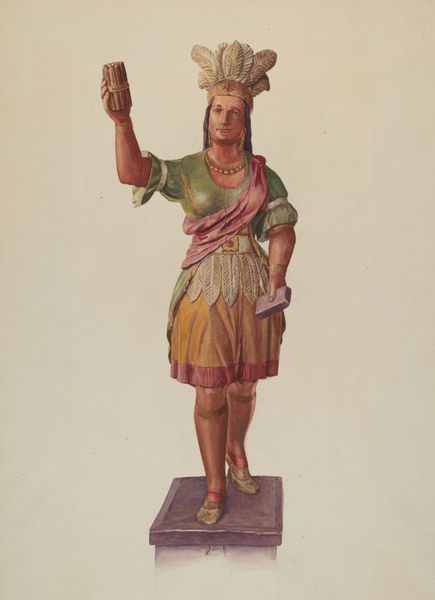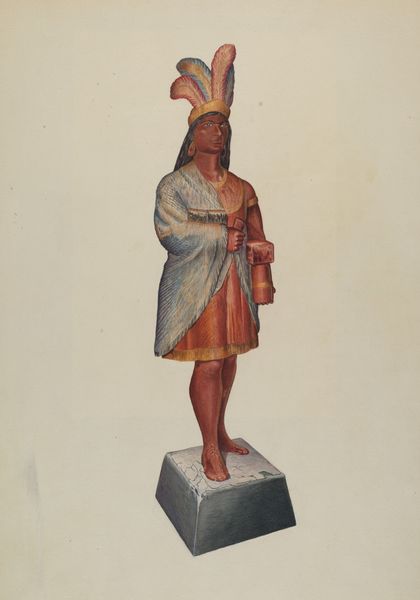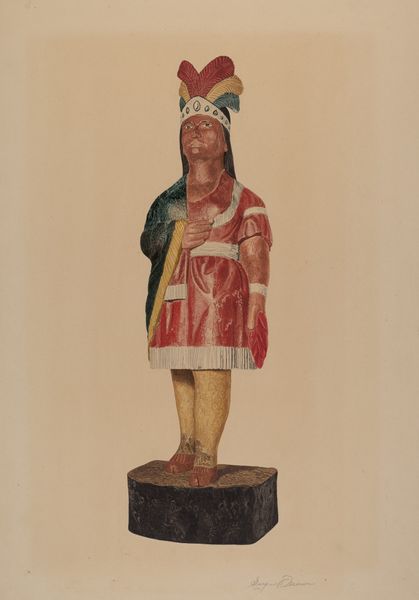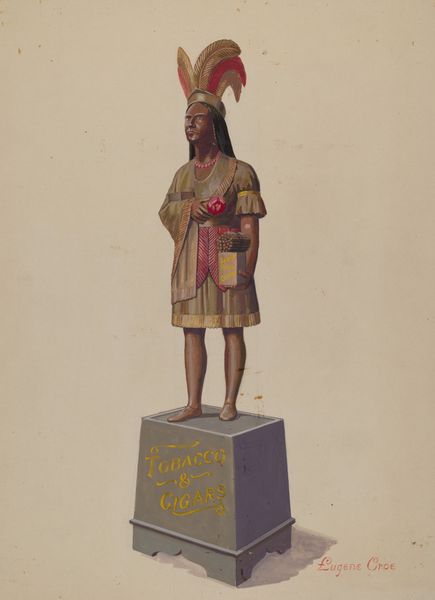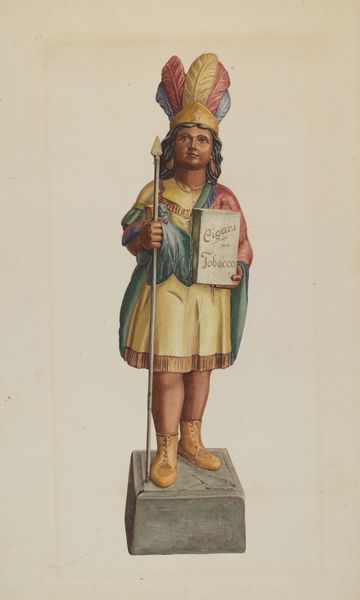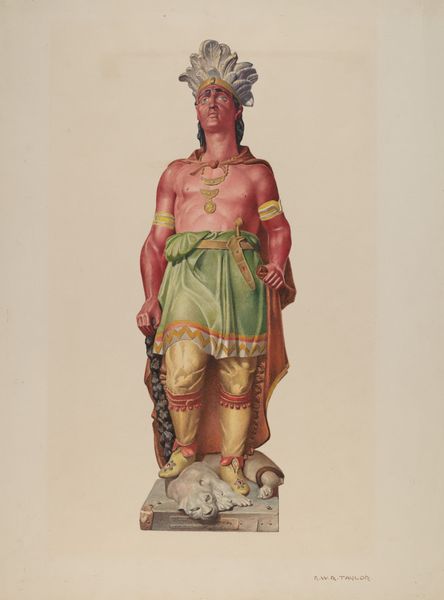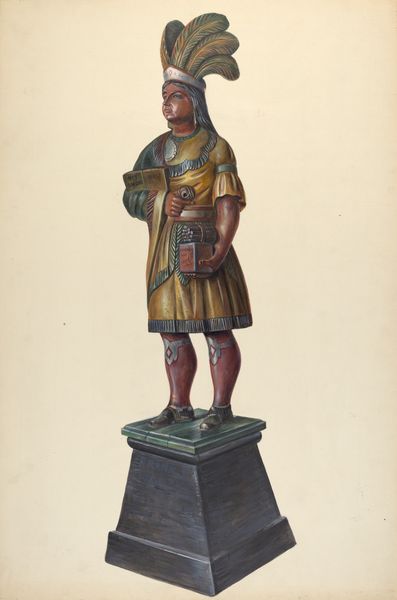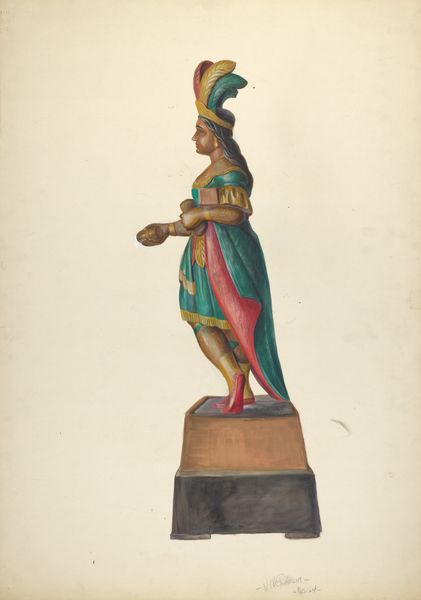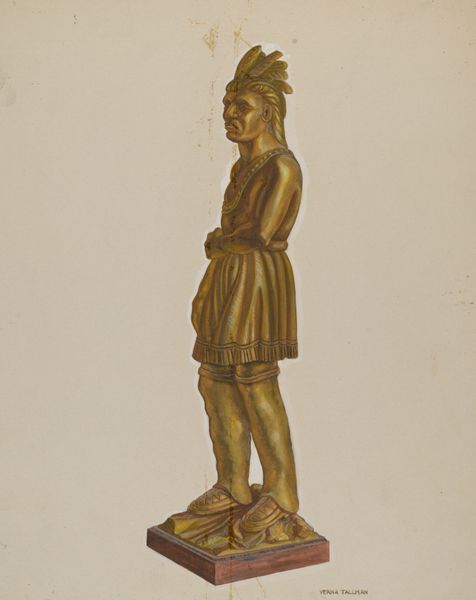
drawing, watercolor
#
portrait
#
drawing
#
watercolor
#
historical fashion
Dimensions: overall: 41 x 30.7 cm (16 1/8 x 12 1/16 in.)
Copyright: National Gallery of Art: CC0 1.0
Editor: This is "Cigar Store Indian," a watercolor drawing from around 1941 by LeRoy Griffith. It depicts a sculpture of an Indigenous person standing on a wooden box. There's a definite sense of nostalgia and, honestly, some discomfort in how it presents this figure. What strikes you when you look at this piece? Curator: Discomfort is a perfectly valid reaction. You know, sometimes I imagine myself shrunk down, wandering through this image. The slightly faded colors create a world almost like an antique postcard, wouldn't you say? And yet, those vibrant green feathers, that direct gaze… it's an invitation and a challenge, all rolled into one. I see a layering of gazes: Griffith’s, mine, yours, the original sculptor’s, the patrons who purchased these figures to beckon customers. It all becomes part of this watercolor, these layered readings. Editor: A layering of gazes, I like that! It makes me think about how much the context has shifted since this was made. What do you make of the cigar store figure itself? Curator: It's a poignant, sometimes troubling relic of American history. These figures were often romanticized depictions used for advertising, contributing to stereotypes even as they acknowledged Native American presence. They promised adventure and exoticism alongside, you know, tobacco. Editor: So it's more complicated than just a simple portrait. It's about consumerism and representation all mixed up together? Curator: Precisely. And Griffith's watercolor captures that complexity. It’s not simply a drawing of a figure, it is an object with history and meaning of layers and cultural complexity, asking us to look at ourselves, and that relationship, closely. The tension is there, simmering beneath the surface, wouldn't you say? Editor: It definitely gives me a lot to think about, much more than I expected! Thanks for illuminating this work. Curator: My pleasure. Art always gains from shared perspectives. And besides, it’s always good to have company when navigating tricky historical terrain, wouldn't you say?
Comments
No comments
Be the first to comment and join the conversation on the ultimate creative platform.

